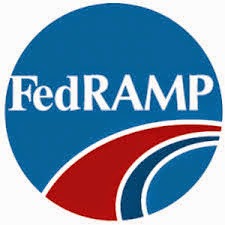Twitter Feed
Cloud Computing on CNBC – $100B market
Google’s Head In The Clouds Follow me at https://Twitter.com/Kevin_Jackson
IBM Blue Cloud
A short news interview on the IBM Blue Cloud . Follow me at https://Twitter.com/Kevin_Jackson
Amazon’s Cloud Overtakes Websites
May 27, 2008 See NY Times article, Cloud Computing: So You Don’t Have to Stand Still Follow me at https://Twitter.com/Kevin_Jackson
May 1 IBM, Google Partnership Announcement
In this video, IBM and Google announce their joint cloud computing initiative. As I said in my earlier post, Google and IBM have teamed up to provide a “Google-like” infrastructure.…
“The Missing Piece in Cloud Computing”
First Software as a Service – SaaS…Then Hardware as a Service – HaaS…Now, Middleware as a Service – MaaS? GigaSpaces’ CMO Geva Perry will be presenting on middleware virtualization at…
How the NRO can leverage Cloud Computing
Last Thursday, May 22nd, I had the pleasure of attending an Intelligence Community Executive Forum hosted by Carahsoft. The topic of this forum was “”Innovative Technology for the Intelligence Enterprise”.…
Green Cloud Computing
The other day I was asked “Why is cloud computing considered green?” Wouldn’t you know, The Economist provided the perfect answer. “In future the geography of the cloud is likely…
Oracle in the Cloud
Oracle (NSDQ: ORCL) is building new data centers to support cloud computing. The company is investing $285M and will break ground on the 200,000-square-foot facility this summer. Oracle’s president Safra…
Cloud Computing supports Net-Centric Warfare
Netcentric warfare theory contains the following four tenets in its hypotheses: 1) A robustly networked force improves information sharing;2) Information sharing enhances the quality of information and shared situational awareness;3)…
 One of the questions I’ve been asked from the beginning of the Federal Cloud First initiative, is, “If my data is in The answer is not as clear-cut as the question. In theory, most cloud services offer extremely resilient platforms and a modicum of disaster recovery is built in. In fact, those cloud service provider (CSP) systems that have received an ATO through the FedRAMP program do have fairly sophisticated contingency plans in place, with Recovery Time Objectives (RTO) and Recovery Point Objectives (RPO) clearly articulated- and plenty of alternate processing sites, policies, and procedures in place in the event of a contingency. So, it’s in there right?
One of the questions I’ve been asked from the beginning of the Federal Cloud First initiative, is, “If my data is in The answer is not as clear-cut as the question. In theory, most cloud services offer extremely resilient platforms and a modicum of disaster recovery is built in. In fact, those cloud service provider (CSP) systems that have received an ATO through the FedRAMP program do have fairly sophisticated contingency plans in place, with Recovery Time Objectives (RTO) and Recovery Point Objectives (RPO) clearly articulated- and plenty of alternate processing sites, policies, and procedures in place in the event of a contingency. So, it’s in there right?
Not so fast- it depends on what services you are acquiring and how you are deploying and managing them. The baseline of this discussion is however rooted in availability and uptime.
the cloud, isn’t my disaster recovery built in? Isn’t that the benefit of being in the cloud?”
- Amazon – 28.23 hours
- Rackspace – 97.98 hours
- Verizon – 136 hours
(This post was written as part of the Dell Insight Partners program, which provides news and analysis about the evolving world of tech. To learn more about tech news and analysis visit TechPageOne. Dell sponsored this article, but the opinions are our own and don’t necessarily represent Dell’s positions or strategies.)
( Thank you. If you enjoyed this article, get free updates by email or RSS – © Copyright Kevin L. Jackson 2012)
Cloud Computing
- CPUcoin Expands CPU/GPU Power Sharing with Cudo Ventures Enterprise Network Partnership
- CPUcoin Expands CPU/GPU Power Sharing with Cudo Ventures Enterprise Network Partnership
- Route1 Announces Q2 2019 Financial Results
- CPUcoin Expands CPU/GPU Power Sharing with Cudo Ventures Enterprise Network Partnership
- ChannelAdvisor to Present at the D.A. Davidson 18th Annual Technology Conference
Cybersecurity
- Route1 Announces Q2 2019 Financial Results
- FIRST US BANCSHARES, INC. DECLARES CASH DIVIDEND
- Business Continuity Management Planning Solution Market is Expected to Grow ~ US$ 1.6 Bn by the end of 2029 - PMR
- Atos delivers Quantum-Learning-as-a-Service to Xofia to enable artificial intelligence solutions
- New Ares IoT Botnet discovered on Android OS based Set-Top Boxes

